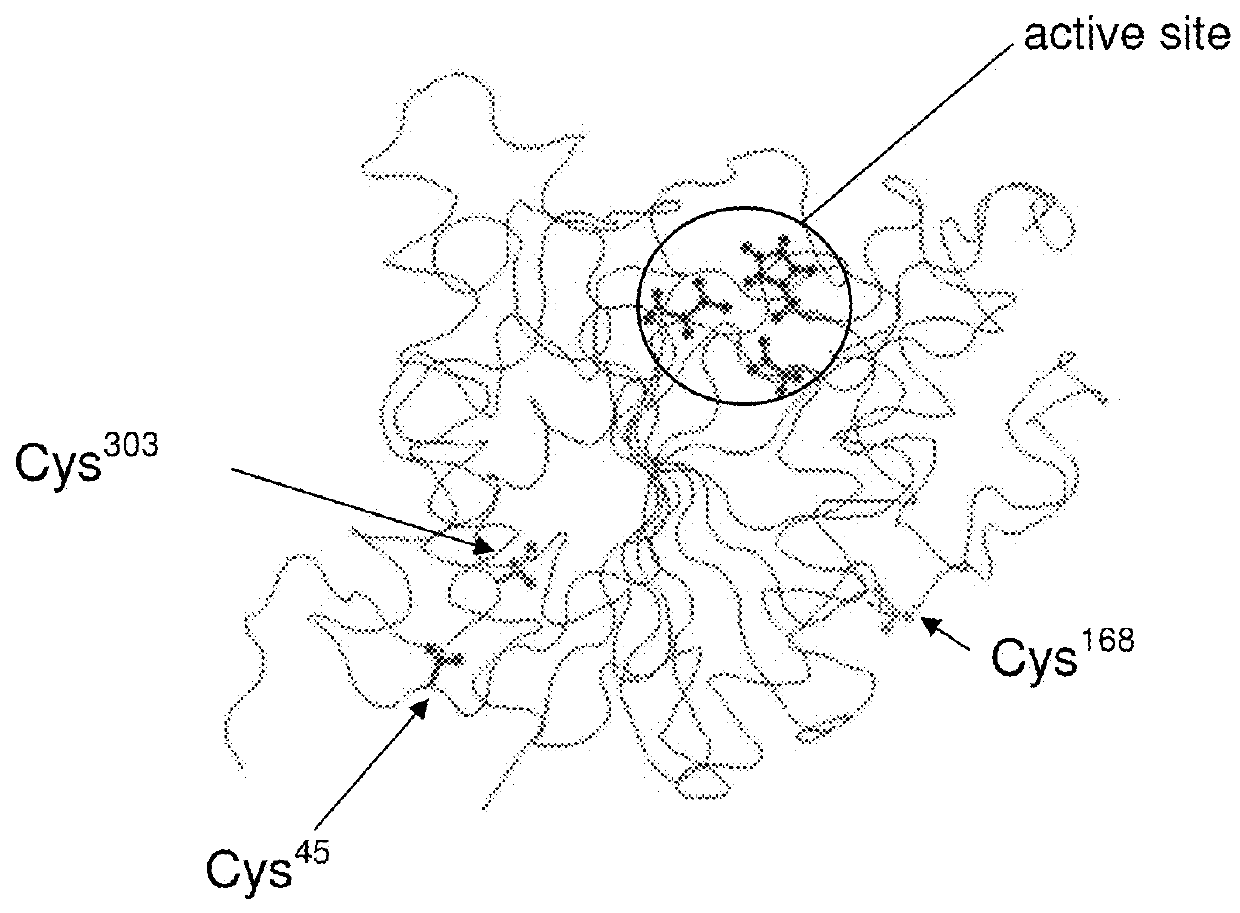Site-directed pegylation of arginases and the use thereof as anti-cancer and anti-viral agents
a technology of arginase and pegylation site, which is applied in the direction of peptide/protein ingredients, enzymology, biochemistry apparatus and processes, etc., can solve the problems of short pharmacological half-life, difficult to achieve therapeutically useful blood levels of proteins in patients, and partial or virtually inactive conjugates, etc., to enhance arginase's enzymatic activity
- Summary
- Abstract
- Description
- Claims
- Application Information
AI Technical Summary
Benefits of technology
Problems solved by technology
Method used
Image
Examples
Embodiment Construction
[0051]According to the present invention, site-specific pegylation of various arginases can be controlled by controlling the availability of sites where pegylation can occur. These sites are selected such that the pegylation does not block the active bonding site while retaining the arginase activity. Although typically a single site is provided for pegylation, more than one carefully engineered site can be provided depending upon the species of arginase.
[0052]Further, the present inventors have determined that alignment of human and Bacillus caldovelox arginase sequences with sequences from other species revealed a high degree of conservation across many species in the regions where successful pegylation has been performed in human and Bacillus caldovelox arginases (FIGS. 19, 20, 21 and 22). For those arginase sequences that possess an equivalent of Cys-45 (found in human arginase) or Ser-161 (found in Bacillus caldovelox arginase), it is determined that the site-specific arginase ...
PUM
| Property | Measurement | Unit |
|---|---|---|
| molecular weight | aaaaa | aaaaa |
| pH | aaaaa | aaaaa |
| flow rate | aaaaa | aaaaa |
Abstract
Description
Claims
Application Information
 Login to View More
Login to View More - R&D
- Intellectual Property
- Life Sciences
- Materials
- Tech Scout
- Unparalleled Data Quality
- Higher Quality Content
- 60% Fewer Hallucinations
Browse by: Latest US Patents, China's latest patents, Technical Efficacy Thesaurus, Application Domain, Technology Topic, Popular Technical Reports.
© 2025 PatSnap. All rights reserved.Legal|Privacy policy|Modern Slavery Act Transparency Statement|Sitemap|About US| Contact US: help@patsnap.com



